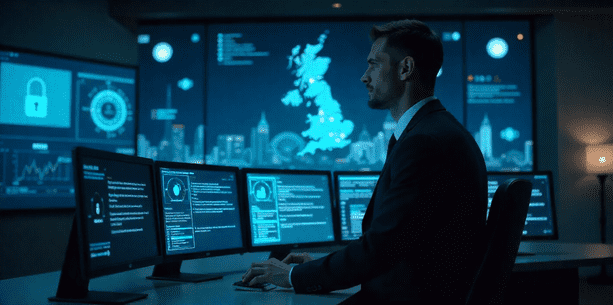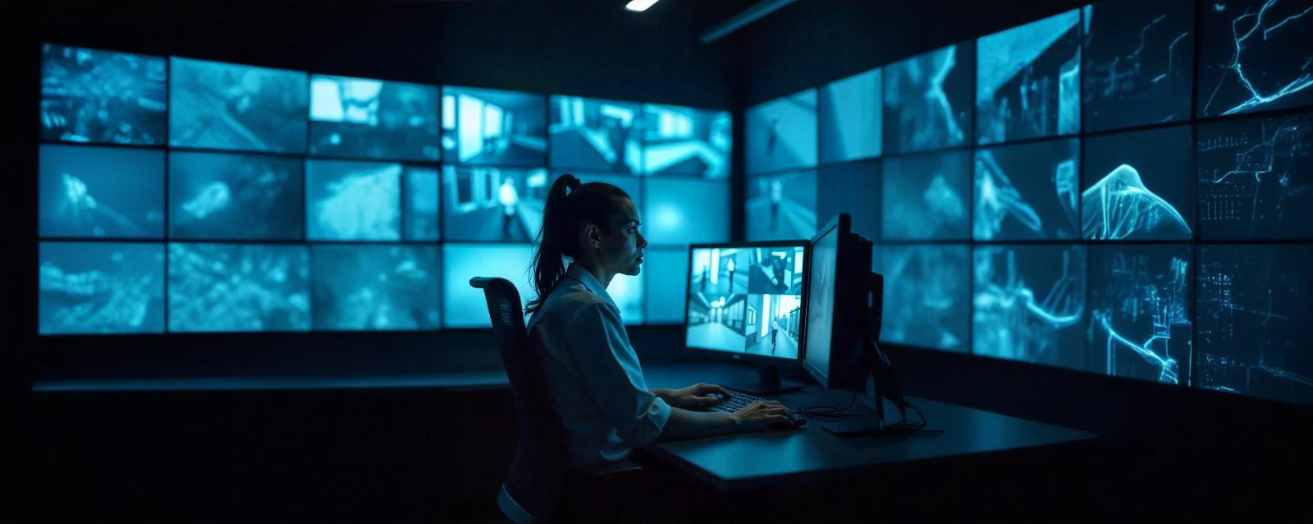The security industry is experiencing a seismic shift that every professional needs to understand. Gone are the days when physical security and cybersecurity operated in separate worlds. Today’s threats don’t respect traditional boundaries, and neither can our response to them.
If you’re a security professional, SIA licence holder, or considering a career in the industry, this convergence isn’t just changing how we work—it’s creating unprecedented opportunities for those ready to adapt.
The Cyber Crisis Hitting UK Security
The statistics paint a stark picture of our current reality. Ransomware attacks on government agencies have surged 65% in the first half of 2025 alone, with 208 incidents recorded. Meanwhile, the UK’s cybersecurity workforce is dangerously under-resourced, leaving businesses across the country vulnerable to an ever-increasing barrage of digital threats.
But here’s what makes this particularly relevant for security professionals: cyber attacks increasingly have physical consequences, and physical security breaches often have digital implications.
The boundaries between digital and physical crime are blurring rapidly, creating both challenges and opportunities for those working in security.
Where Digital Physical Security Converge in Practice
Consider a typical retail environment where many security professionals work. A cybercriminal might hack into a store’s security system to disable cameras before orchestrating a physical theft. Alternatively, a physical break-in might target servers containing customer data rather than traditional cash registers.
This convergence isn’t theoretical—it’s happening right now across the UK. The recent implementation of Martyn’s Law reflects government recognition that modern security requires integrated approaches that consider both digital vulnerabilities and physical access points.
For security officers, this means understanding how these systems interact has become essential rather than optional.
Real-World Examples of Convergence
Corporate security officers today might start their shift checking physical access logs, but they also need to understand if unusual network activity correlates with attempted physical breaches. They might coordinate with IT teams during incidents or ensure that security footage is properly protected from digital tampering.
Even in retail environments, security professionals increasingly work with sophisticated systems that collect and process data. Understanding how these systems work—and how they might be compromised—is becoming part of the standard job description.
The Skills Gap Creating Career Opportunities
The cybersecurity skills shortage isn’t just about IT departments struggling to fill positions. It’s about a fundamental gap in understanding how digital and physical security systems interact and depend on each other.
Traditional security professionals who understand these connections are becoming incredibly valuable in the job market. Companies desperately need people who can think holistically about threats, whether they arrive through a network cable or a back door.
This skills gap is particularly pronounced in sectors like finance, healthcare, and government, where the stakes are highest and the integration between physical and digital security is most critical.
Why Security Professionals Have an Advantage
Security officers already possess many of the foundational skills needed to bridge this gap:
Crisis Management: The ability to stay calm under pressure and make quick decisions—skills that apply equally to cyber incidents and physical threats.
Risk Assessment: Understanding how to identify vulnerabilities and potential attack vectors, whether they’re unlocked doors or unsecured networks.
Communication Skills: Coordinating responses between different teams becomes crucial when incidents span both physical and digital domains.
Attention to Detail: Spotting anomalies and suspicious behaviour, whether it’s someone acting strangely in a building or unusual activity on security systems.
Government Response and New Training Requirements
The government recognises these evolving threats. New regulations around age verification and online safety are creating demand for professionals who understand both the technical requirements and the practical implementation challenges.
The SIA’s training changes reflect the industry’s evolution toward higher standards and better preparation for real-world challenges that increasingly involve both physical and digital elements.
It’s not enough to install software and hope it works. Someone needs to ensure these systems function in the real world, with real people, in real situations. That’s where security professionals with cross-domain knowledge become essential.

Training for Tomorrow’s Digital Physical Security Landscape
The security training landscape is evolving rapidly to meet these new realities. Modern courses increasingly cover topics like:
- Recognising and responding to cyber-physical attacks
- Understanding network security basics in physical environments
- Coordinating responses between IT teams and security personnel
- Protecting sensitive data during physical security incidents
These aren’t nice-to-have skills anymore—they’re becoming essential for career advancement in the security industry.
Building Your Integrated Skill Set
For security professionals looking to stay ahead, the key is understanding how digital systems work without necessarily becoming a cybersecurity expert overnight. This means:
Learning the Basics: Understanding how networks, access control systems, and surveillance technology actually function.
Recognising Anomalies: Knowing when something seems off with technology and how to respond appropriately.
Communication Skills: Being able to work effectively with IT teams and understand their concerns and priorities.
Incident Response: Understanding how to handle situations that involve both physical and digital elements.
The Professional Advantage in Today’s Market
Security professionals who embrace this convergence find themselves in exceptionally high demand. The SIA’s latest data shows strong industry growth, but the real opportunities lie with those who can bridge traditional and digital security domains.
Companies value people who can think across traditional boundaries and adapt to evolving threats. The career progression opportunities are significant, and the compensation reflects the specialised knowledge required.
This is particularly true in high-stakes environments where security breaches can have serious consequences for both physical safety and data protection.
Building Your Future-Ready Security Career
The convergence of digital physical security isn’t a distant trend—it’s happening now. The professionals who recognise this shift and adapt accordingly will find themselves at the forefront of an industry that’s more dynamic, more challenging, and more rewarding than ever before.
For those already working in security, consider how you might expand your knowledge of digital systems. For newcomers to the industry, look for training programmes that cover both traditional security skills and modern technological challenges.

Conclusion
The security industry’s future belongs to professionals who understand that physical and digital threats are increasingly interconnected. With cyber attacks surging and skills shortages creating critical vulnerabilities, there’s never been a better time to develop expertise that spans both domains.
The question isn’t whether this convergence will continue—it’s whether you’ll be ready to take advantage of the opportunities it creates.
Ready to future-proof your security career? Explore cyber security training and discover how you can develop the integrated skills that tomorrow’s security industry demands. Whether you’re looking to renew your licence or start with door supervisor training, we’ll help you build the expertise that sets you apart in this evolving industry.












